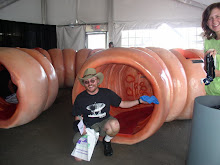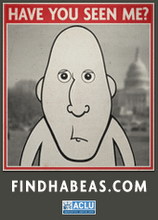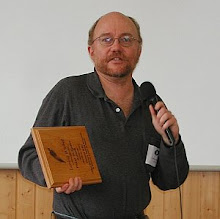What the transistor radio sees and says - 1964-67
Because the
station frequency numbers were embossed in gold along the gear wheel on the
right side, the sturdy plastic radio was likely to be a Sony, possibly Philco,
or maybe one of the recent knockoffs that seemed to flood the market around
1961. The birthday gift from Grandma and Grandpa Wirbel held no immediate
relevance to my ears for the on-air musical content, but solely for the
fast-talking disembodied voices. The sturdy construction was tough enough to
survive at least three birthdays and then some, in the badass toddler years
between four and seven, revived from overnight neglect on dewy lawns, and at
least one trip to the Lake Michigan beach. In fact, I often wondered if the
capacitors emanated an invincibility aura – our young basset hound puppy
gobbled my sister’s entire bright blue plastic dollhouse furniture set (and
shat blue settees for weeks), but never touched the white radio nearby.
The transistor radio was aptly named, since
it used a solitary transistor to amplify radio signals, and did it far cheaper,
using less power, than tube equivalents. This allowed radios to be portable and
affordable to a younger audience for the first time. Even though multi-function
boom boxes could take advantage of medium-scale and large-scale integrated
chips, which were introduced into consumer markets in the 1970s, the
single-transistor radio offered enough advantages for cheap portability that
they are still offered in niche markets in the 21st century.
My own cream-colored transistor radio was there to document vague early rhythmic melodies of The Ventures and The Beach Boys. Every so often, some mysterious juke joint Chuck Berry or Buddy Holly tune might get played on oldies hour. MAD magazine gave us secondary exposure to the sappier side of teen heartthrobs like Fabian, Annette Funicello, Frankie Avalon, and Bobby Rydell, but their songs rarely lasted a measure or two before a quick turn of the dial. In the early JFK years, my music appreciation was limited to Mitch Miller’s cover of “Nick Nack Paddy Whack” and not much else.
The
radio was there while mama at the home entertainment center made the transition
from Mario Lanza to Peter, Paul & Mary. (The large and daunting home
entertainment center, complete with turntable but no space for a TV, was
largely a mystery to my preschool consciousness.) The transistor radio was
there when The Beatles made their February 1964 debut on The Ed Sullivan Show,
though I have no distinct memory of Beatles music on the radio itself in that
early period, nor of my pocket radio making the move in October 1963 to our new
Victorian home across town. It was the source of chirping voices selling movie
debuts, sonorous baritone voices promising a “music for the middlebrow,” but
the music riffs seemed to slide past very young ears not yet tuned to such
frequencies.
As Dar Williams has noted more than once,
it’s the babysitters that make all the difference. Cathy and Bettie both
introduced me to the concept of the 7” 45 rpm single, the small record with the
big center hole, and within a few sessions, my 7-year-old mind was blown. Since
I had not the vaguest notion of what constituted a “hit,” I had a democratic
proclivity to elevate the B-side of any single to the worth of its better-known
partner. And the mixtape in my young brain was a confusing place – Bob Dylan’s
“Gates of Eden” alongside Hayley Mills’ “Cobbler, Cobbler.” It was all good,
all a feast.
Maybe it was a desire to hear Christmas
carols on the go in the holiday season of 1964 that led me to that a-ha moment,
as intense as Helen Keller screaming “wa-wa” in The Miracle Worker. This
radio I held in my hand was playing a rock and soul and country mix as diverse
as any random 45 rpm thrown on the turntable! And the Top 40 stations kept the
party going 24 hours a day! Music did not displace the central role in
consciousness occupied by the best of the 1960s TV series – Lost In Space,
The Munsters, The Man from U.N.C.L.E., My Favorite Martian – but it was far
more portable and at least as loyal as your most constant friend or pet.
It dawned on me that the best of
kid-oriented TV series would usually be sponsored by the likes of Mattel or
Hasbro toys, or the new fast-food chains emerging coast to coast. At least a
decade would pass before I fully understood that this was the early part of an
era of corporations explicitly tailoring ads and content to the “youth market.”
Contrary to the popular belief that this trend began mid-decade with
flower-power automotive ads and the use of “groovy” in ad scripting, the appeals
to a youth market began not long after the first wave of 1950s rock and roll.
The
establishment of Camelot as Kennedy entered the White House convinced Madison
Avenue that youth culture was a semi-permanent fixture, and a potentially
permanent market. In the case of the Hayley Mills B-side which paired so nicely
with Dylan, the primary Mills side was taken from the soundtrack of the
original Parent Trap, and featured Hayley singing “Let’s get together,
yeah yeah yeah” in 1961, two years before The Beatles paired the three words
with “She Loves You.” For cultural critics who assumed Beatlemania was a
response to the void left by Kennedy’s assassination, we could accept that as
true in part, while realizing that millions of American youth were prepped for
“yeah yeah yeah” long before the Cuban missile crisis.
I wouldn’t learn until far later in life
that it was a vast oversimplification to think of one unbroken rock and roll
chain that linked the Chuck Berry/Elvis generation with the Beatlemania world.
The teens who had grown up with big bands and jitterbug dancing, those who may
have served in WWII or the Korean War, did not understand either wave of rock
and roll, for the most part, and ended up as the parents of the boomers
cheering on the British invasion. Teens who were centric to the mid-1950s’
first wave of rock and roll usually did not find the end-of-decade crooners
very interesting. If they were college-bound, they might gravitate to modern
jazz or to the many folk revivals that kept hitting campuses between 1940 and
1965. Working-class teens who got jobs in factories often shifted tastes to
country music. Only a handful of music-savvy 20-somethings grasped the changes
The Beatles were bringing in 1964. Most thought the music simplistic and
dreadful, just as many parents of boomers did. A certain percentage of those in
their 20s came around by 1966 or so, but the older generation never did. What
this indicates is that music generations and the reference points fans use,
change every five years or so. This was even true later in the 21st
century, when overt styles changed less frequently than in the late 1960s. The
drive to push youth marketing in the 1960s was always tricky, because there
wasn’t a single Generation Gap, there were several.
Certain elements of youth marketing were
perplexing to the primary-school radio addict, particularly that marketing
sector geared specifically to the adolescent teenage girl. What were we to make
of The Patty Duke Show, milking town mouse and country mouse for all it
was worth, as Brooklyn rocker met globe-trotting identical cousin? For a
7-year-old, it meant a deep dive into the motives of weepy teen women with
ironed hair, and a belated appreciation of The Shangri Las, just as Mary Weiss
and pals were finishing their run of talk-drama.
The
next step in deciphering music meaning was subjecting children’s LP records to
what Pauline Oliveros would later call “deep listening,” with one case in point
being Ray Heatherton’s The Merry Mailman’s Songs and Stories for Children. It
wasn’t until much later I discovered Ray was Joey Heatherton’s dad, and had
been a victim of anti-communist witch hunts just a few years earlier. But the
choice cuts of “Weevily Wheat” and “I Don’t Want to Play in Your Yard” made
their way into critical films of adult life, Agnes of God and Reds, respectively.
It all happened for a reason.
The Beatles’ management captured the
timing for taking advantage of youth marketing when developing concepts for
what became the film A Hard Day’s Night – slapstick rapid-fire jokes,
quick celebrity cameos, many techniques used in later variety shows like Laugh-In.
In secondary movie markets like my Midwestern town of 5000, there had to be
some backup alternatives to screen at the Sun Theater other than Elvis (which
continued to play well for those in their 20s and 30s, but was seen as largely
irrelevant by many tweens). We got our first exposure to British Invasion bands
with titillating also-rans like the Dave Clark Five’s Having a Wild Weekend,
Herman’s Hermits’ Hold On!, and Freddy and the Dreamers’ Seaside
Swingers. Admittedly, for the average primary-school kid, the films had
less pull than most Disney fare. But if anyone stumbled into such a film
precisely at the time they discovered Top 40 radio, the impact was
electrifying.
If the epiphany moment for many was The
Beatles on Ed Sullivan in 1964, for me it was The Supremes singing “Stop in the
Name of Love” on The Hollywood Palace a year later. I grew up in a
squeaky-white small town bubble, and it suddenly hit me that 40% or more of Top
40 radio was comprised of hits from Motown and its rivals, spotlighting people
of color. Admittedly, the generation of white rockers around Buddy Holly and
Carl Perkins experienced the same revelation at least a decade earlier, since
the first rock and roll tunes were created with help from Wolfman Jack and
long-distance AM radio, expanding Black rock-and-jive music to a nerdy white
audience in after-midnight broadcasts. But for me, Diana Ross was the entry to
realizing that a unifying pop radio now covered a wider cultural sector of the
U.S. than had ever been reached. And the violence of Selma and Birmingham could
not erase that kind of wave. My grandfather owned a cabin in northern Michigan adjacent
to the famous Black summer resort of Idlewild, and trips to the nearby Nah-Tah-Ka
roller rink gave me an early insight not only into civil rights and
integration, but into R&B and soul hits.
The summer of 1965 was the first season my
parents owned a cabin cruiser on the shore of Lake Michigan, which meant
regular trips to Grand Haven in a Buick convertible, though the weekends were
often spent pumping bilge rather than making extended trips into Lake Michigan.
Skipping along the boardwalk in Spring Lake came with a soundtrack of The Four
Tops singing “Sugar pie, honeybunch,” as well as the first in an endless series
of Sonny & Cher hits (and how many remember that the couple released as
many solo singles in 1965 as singles under their duo name?). There are certain
songs from that year, like The Walker Brothers’ “Make it Easy on Yourself,”
that will always carry a Great Lakes sunset as a screensaver. By the second
year of my parents owning the Two-Lous boat, Every Mother’s Son had
crafted the perfect theme song for a young sailor, “Come On Down to My Boat,
Baby.”
Autumn into Christmas in 1965 was a far
more sober season, filled with Barry Maguire’s “Eve of Destruction,” Dylan’s
“Like a Rolling Stone,” new Dylan covers by The Byrds, The Rolling Stones’
“Satisfaction,” and that first Simon and Garfunkel appearance on the charts, “Sounds
of Silence.” Corporate marketeers tried to assuage the escalating social and
political grumbling in the background, long before the launch of “Coming-Home
Soldier,” “Billy and Sue,” or “Ballad of the Green Beret,” by promoting a
rock-ribbed answer to “Eve of Destruction” in the form of The Spokesmen’s “Dawn
of Correction.” Somehow, although The Spokesmen had far fewer sales and far
less street cred than Barry Maguire, the former ended up on Shindig and Hullabaloo
– perhaps as a way of undercutting Barry Maguire’s message? High school
students were getting slightly unnerved with the vast expansion of the draft
during that year, but those of us in third grade at Holbrook Elementary School
would take another two years to even recognize the name of Vietnam.
By late the next spring, it was evident
that 1966 was the high-water mark for Top 40 chutzpah and diversity, though one
could scarcely notice the gestation of the revolution in the first winter
months of the year. In fact, the first obvious trend of 1966 was the pandering
to under-12 fairy tales (not that different from Broadway in the early 21st
century). Suddenly, Sam the Sham & the Pharaohs’ “Little Red Riding Hood,” Dee
Jay and the Runaways’ “Peter Rabbit,” and Crispian St. Peters’ “Pied Piper” all
were fighting for space at the top of the charts, accompanied by some insipid
televised renditions not that different from The Banana Splits or The Wiggles
in decades to come.
Later years in that decade were given
defining titles – “Psychedelia and the Summer of Love,” “1968: Year of
Revolution” – but in these cases, the events were chewed up and regurgitated by
media barons and scene makers. Through a 9-year-old’s eyes, 1966 was the most explicitly
radical of the decade because the pace and direction of cultural change could
not be predicted. The television shows Batman, Star Trek, Time Tunnel and
The Monkees all launched in 1966, and Frito-Lay introduced Doritos the
same year. The totality of 1966 pop culture held more relevance than any
Haight-Ashbury shenanigans then or since. Journalist Jon Savage, in his survey 1966:
The Year the Decade Exploded, pointed to another critical factor that made
1966 unique: the accelerating speed with which change in pop culture occurred.
Other years could bear the mantle of international tensions or violent
revolutionary rhetoric, but 1966 was the year that culture leaders put the
pedal to the metal. Even in elementary school, we could feel the thrill of that
speed.
Just as Savage pointed out that
trend-makers in New York, London, and L.A. could feel a certain hesitation and tension
at the end of the summer of 1966, something palpable and visceral was happening
culturally at the start of fourth grade. Putting the boat up for the winter was
accompanied by The Lovin’s Spoonful’s “Summer in the City,” followed by The
Happenings’ “See You in September.” It wasn’t as though Mrs. Woodworth’s elementary
school class held any special dread. The new episodes of Monkees misadventures
and Captain Kirk’s intergalactic stopovers provided plenty of fodder for Larry,
Dan, and I to talk about while we traversed the boundaries of the playground
after a round of kickball. But in the classroom, there were the first rumblings
of pre-adolescent crush and singles going steady, of boys with a mod proclivity
turning into dedicated followers of fashion, of the rudimentary awareness that the
temporary presence of many Rodriguez and Sanchez families in the class roster
had something to do with migrant workers.
The cut-out collage class project doubling
art and civics credits introduced me to the first arresting pictures of that
mythical place called Vietnam. In one block of my street alone, there were
three older brothers being inducted into the service, and one older brother of
my best friend Jamie seeking conscientious objector status. It was a lot to
take in, and the details did not coalesce into any kind of coherent whole. It
just seemed there was an undercurrent of sadness lingering just behind the
cartoon icons and wonderful sounds. In my time at the library, the latter
months of 1966 represented a turn in literary tastes to the grownup form of
science fiction offered by Ray Bradbury, Isaac Asimov, and Theodore Sturgeon,
whispering the message that even the earliest stages of adolescence would come
with a need to recognize disaster – though the related caution to “sober up”
would be deliberately ignored in years to come by everyone from age 10 to 30.
I asked myself in later teen years if
there was any inkling in 1966 of what West Coast acid tests or New York Andy
Warhol “happening sessions” were all about. It seemed as though we were fed
some anti-pot, anti-hallucinogen propaganda long before the Summer of Love. It
seemed as though the fringed jackets and ultra-long hair garnered some
wide-eyed attention around that time, and I distinctly remember telling mama I
“wanted to be a hippie when I grow up” after watching a CBS newsreel. But it
all seemed as fantasy-driven as Monkees misadventures on TV. Tension hit closer
to home in the November 1966 Sunset Strip riots, since the average age of
participants was between 11 and 14, but little of that connected in more than
superficial ways. After all, the nearby Michigan cities of Lansing and East
Lansing had witnessed separate instances of youth riots in the summer of 1966, and
none of it stuck to a pre-pubescent consciousness. Popular music was doing
little but fraying the edges of innocence before the hippie upheavals.
In three weeks - Chapter 2 - Octagonal Purple Prism Lenses - 1967-68
Copyright 2024 Loring Wirbel









No comments:
Post a Comment